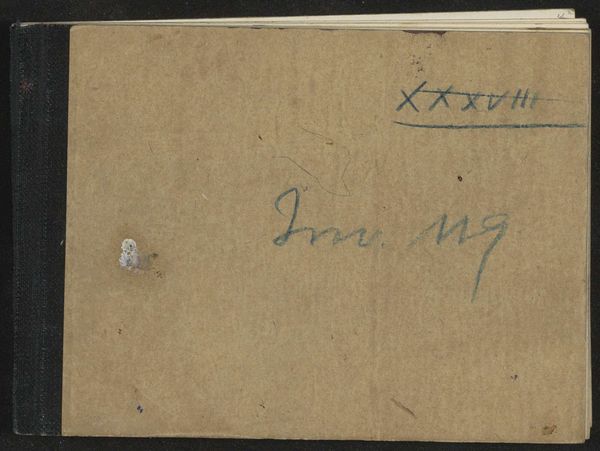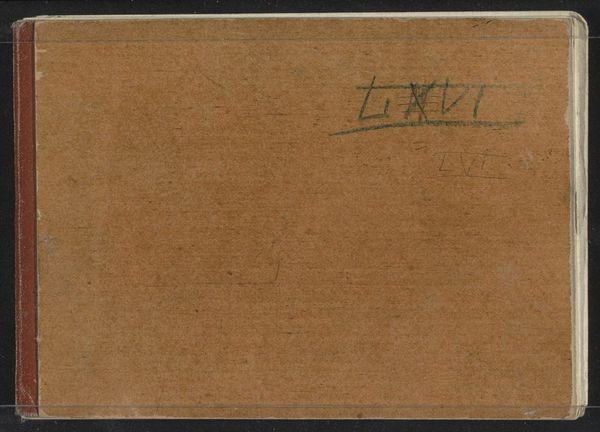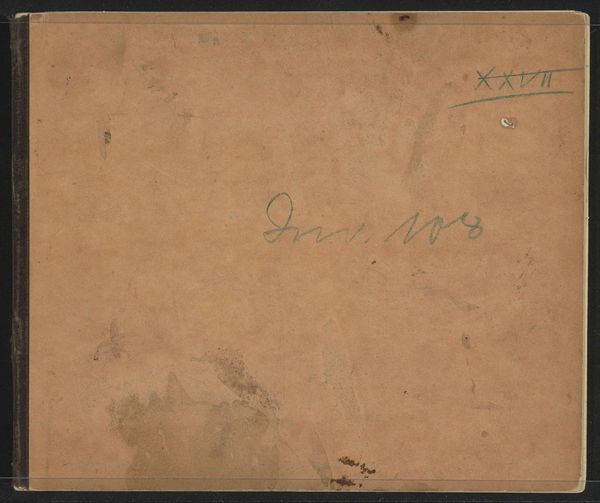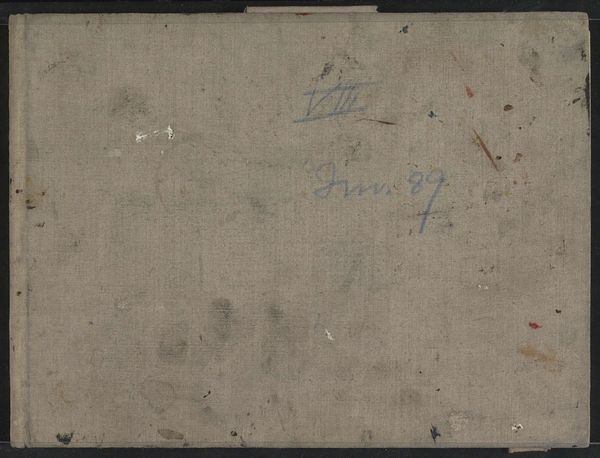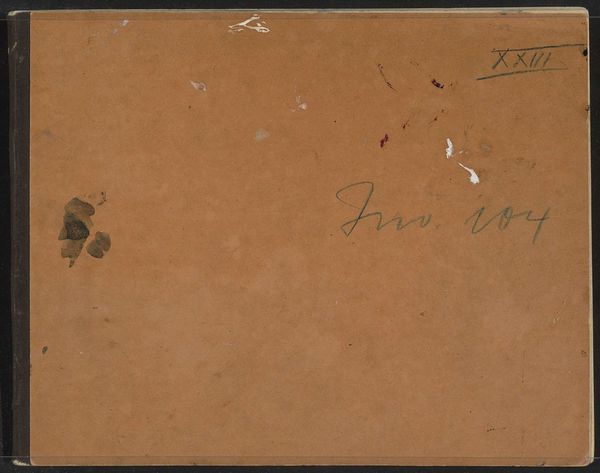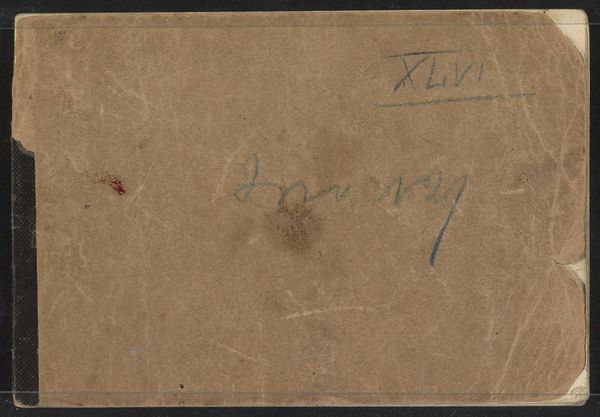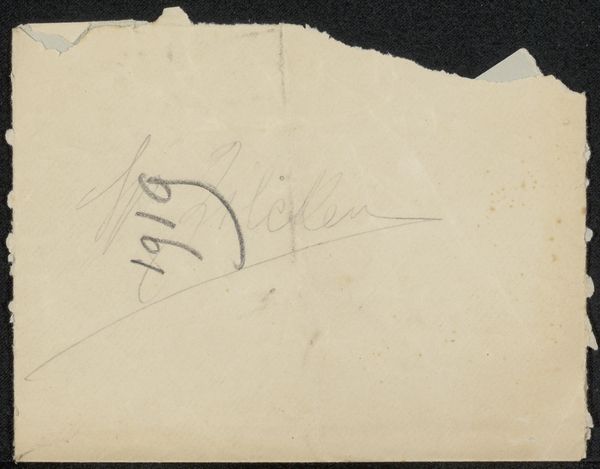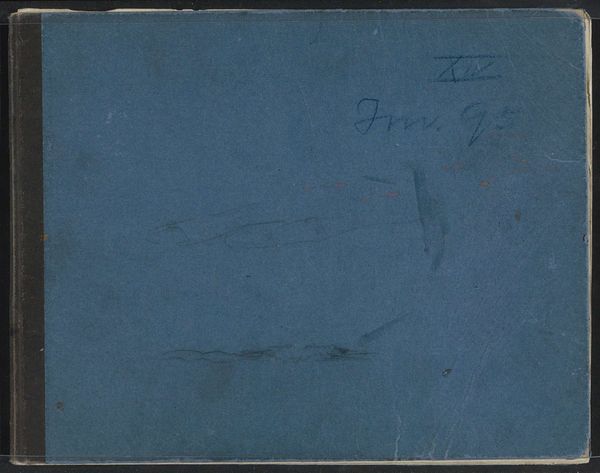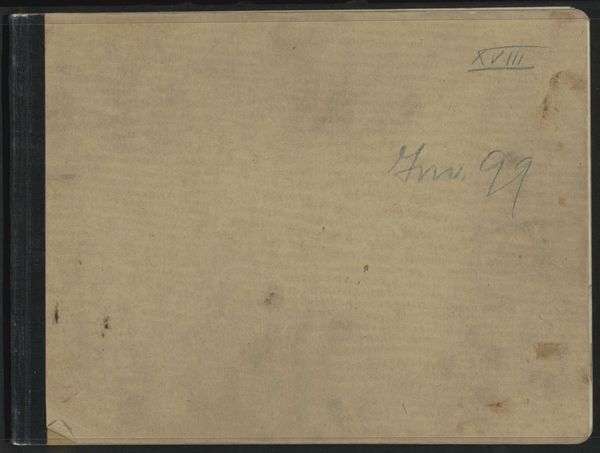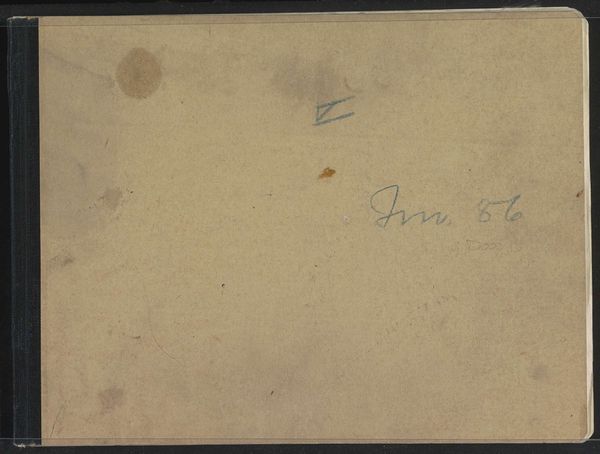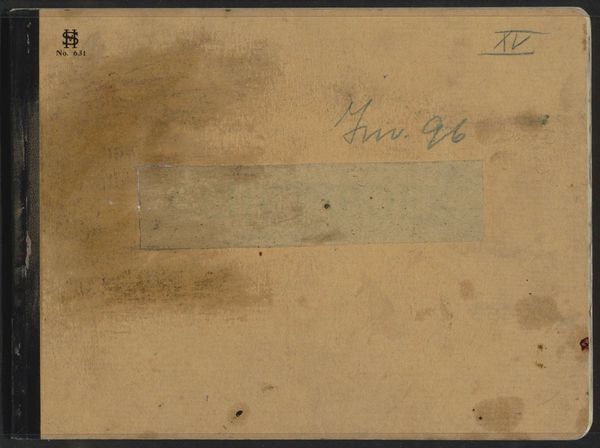
drawing, mixed-media, paper
#
drawing
#
mixed-media
#
paper
#
coloured pencil
Dimensions: height 115 mm, width 157 mm, thickness 6 mm, width 320 mm
Copyright: Rijks Museum: Open Domain
Curator: We’re looking at "Sketchbook XLVII with 52 pages," a work attributed to Isaac Israels, created sometime between 1886 and 1903. It’s held here at the Rijksmuseum. The materials include drawing and mixed-media on paper, offering a glimpse into the artist's working methods. Editor: Mmm, my initial impression is one of quiet intimacy. It’s humble, almost secretive. It looks like something you’d find tucked away in an attic. The inscription on the front cover only adds to that aura of mystery. Curator: I agree. Sketchbooks can give us invaluable insight into the artistic process. In Israels' case, looking at this notebook raises questions about the role of sketching in his development as an artist. Did he primarily use it for studies related to larger works, or did the sketchbook become a place for more personal, uninhibited expression? I'm interested in whether this sketchbook aesthetic could influence future artistic engagements on paper? Editor: Right! I imagine Israels carrying it around, jotting down impressions of the world. There’s something about seeing the raw, unedited thoughts of an artist that is more captivating than seeing polished final pieces sometimes. It reminds me of those behind-the-scenes documentaries that humanize even the most celebrated figures. The small scale too evokes intimacy, a private moment. I mean, wouldn't it be something to actually hold it and leaf through the pages. Curator: Indeed. And to really unpack its relevance we need to also acknowledge issues of access and the construction of narratives within museums. Which sketches were selected to be preserved, and how does that shape our understanding of Israels' full scope of work, what criteria were there that helped pick that one specifically out of many that maybe have the same potential? Editor: Hmm. Thinking about that selective preservation adds another layer of complexity. Maybe this notebook survived precisely because it wasn't deemed "important" enough to be disturbed or exhibited widely at the time, thereby escaping damage or scrutiny. Perhaps the lack of public access, paradoxically, allowed it to endure relatively intact. The silence surrounding it somehow enabled it. Curator: I find that idea compelling; its survival being, perhaps, partially attributable to its unimportance highlights larger cultural value and reassessments regarding "art". Editor: Exactly, this one feels like a rebel; a quiet survivor, almost defiantly ordinary. A testament to all the discarded sketches and almost-famous artists. The magic of everyday artistry, that lives outside spotlights.
Comments
No comments
Be the first to comment and join the conversation on the ultimate creative platform.


